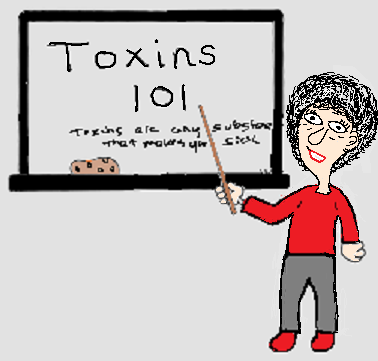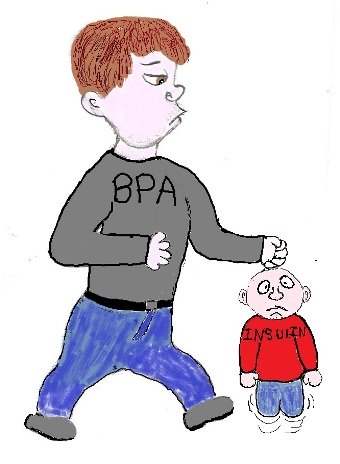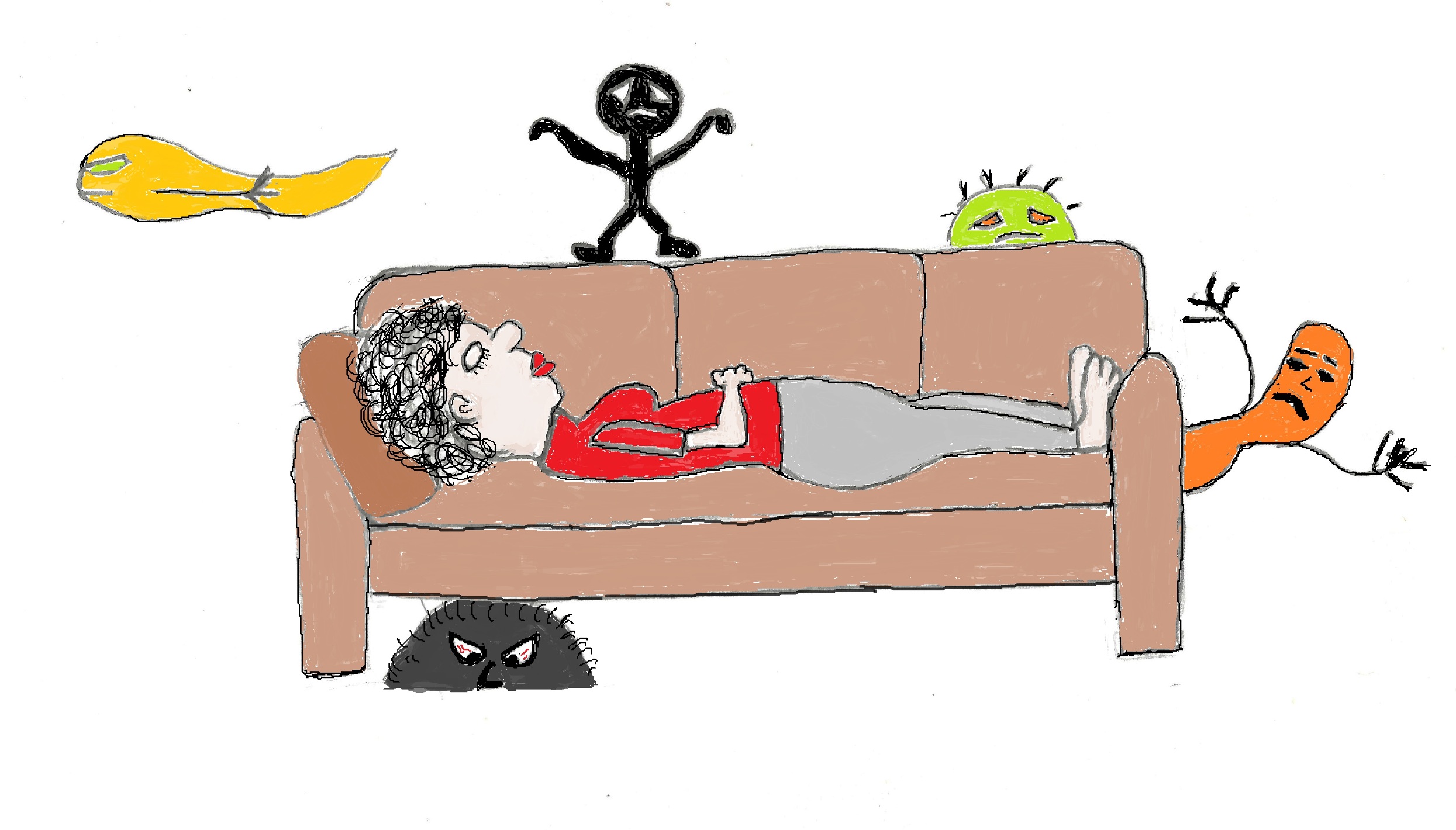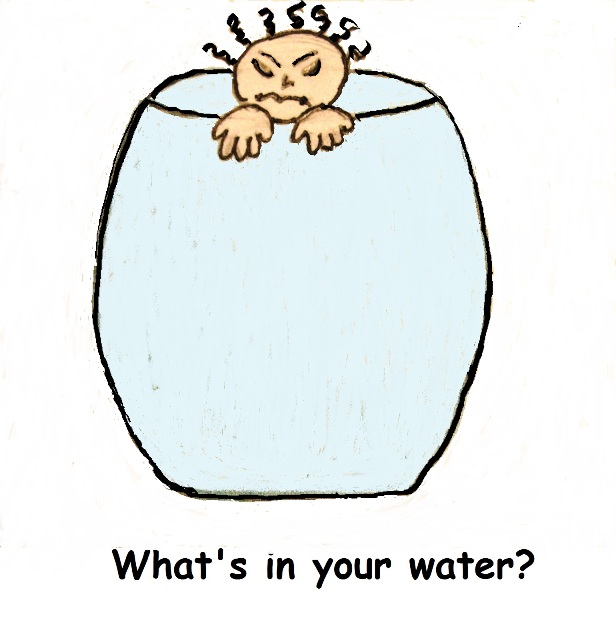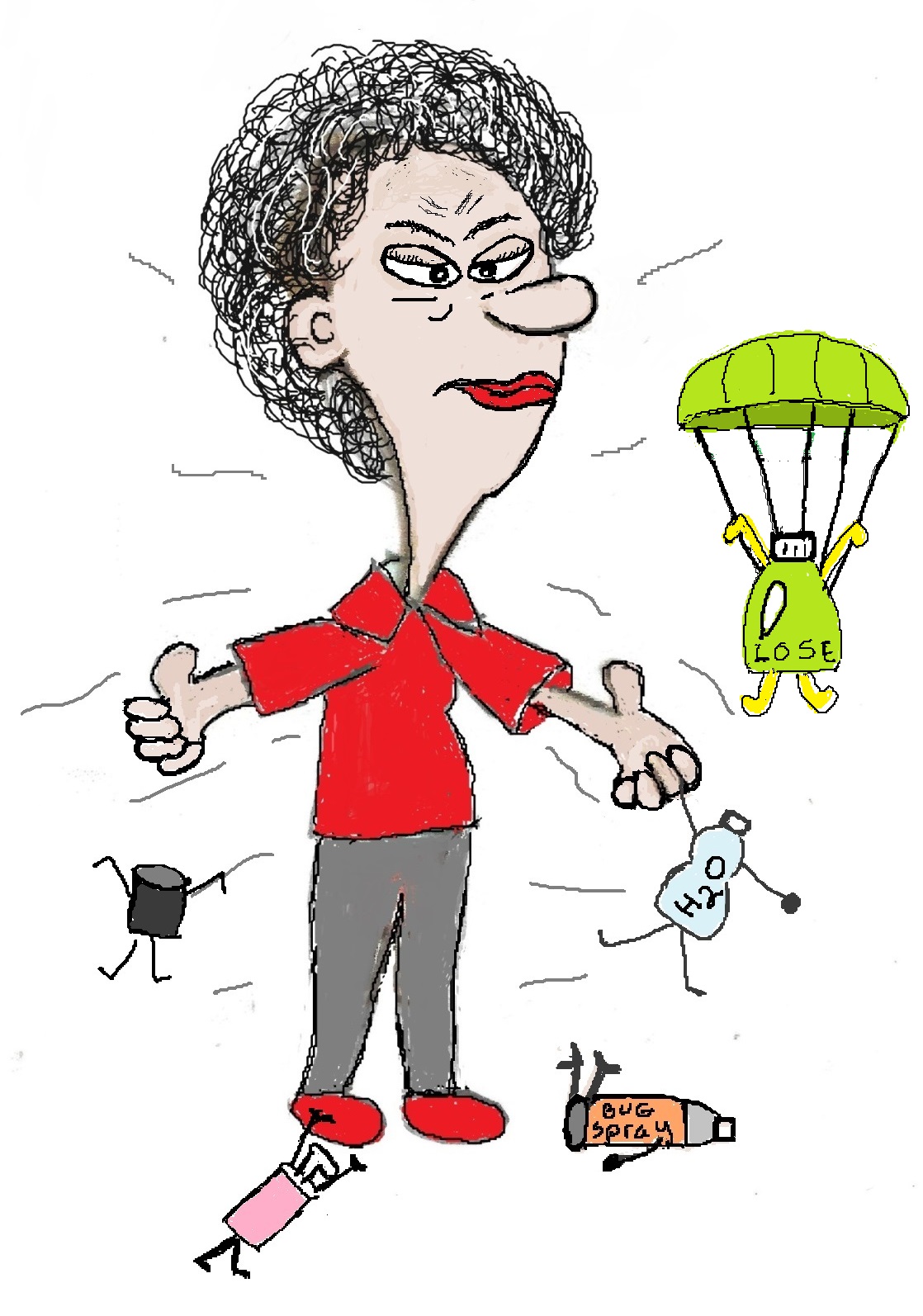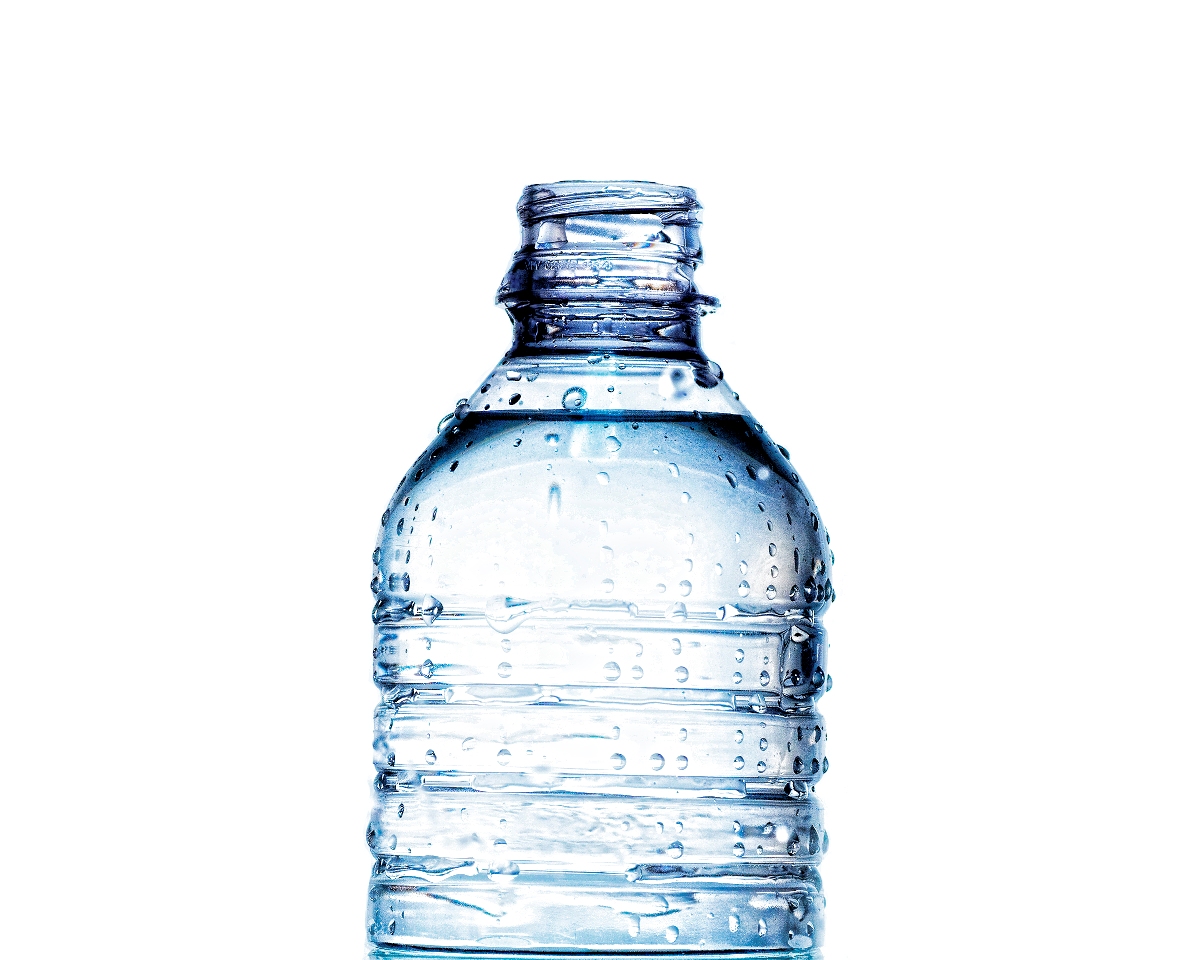- Home
- Toxic Chemicals & Health
- Toxin
Toxin Primer
Got questions about toxins? Like what they are? How you're exposed and how they harm your health? This primer provides the answers you need.
This primer provides a basic foundation for understanding the chemicals that can harm you. Click on the links to learn more about them and how to lead a less toxic life.
1. Toxins Are Chemicals That Harm Your Health
Everything is made up of chemicals. Your body depends on chemicals to function. However, some chemicals, especially synthetic chemicals, do harm to your body. They mess with the way your body should function and can make you sick.
The Environmental Protection Agency defines a toxin as “any chemical or mixture that may be harmful to the environment and to human health if inhaled, swallowed, or absorbed through the skin. There are naturally occurring toxins (poisonous substances coming from living organisms) found in certain plants like poinsettias and even some wild mushrooms and berries. However, the toxic substances contained in most everyday household products are synthetic, which means they are man-made. The opposite of toxic substances are called non-toxic substances. Non-toxic substances are safe to use, and do not harm humans and the environment.”
2. They Enter Your Body Three Ways
They enter your body through the food you eat and water you drink, the air you breathe, especially indoor air, and the products that you put on your skin. In other words, you inhale and ingest toxic chemicals and absorb them through your skin.
1. Inhaling Toxic Chemicals
Outdoor air contains toxic chemicals from car exhaust, industry, power plants, farming and many other sources. Indoor sources include toxins are emitted from the products you use in your home and the building materials in your home.
Toxic Chemicals in outdoor and indoor air are in the form of gases, vapors, mists, fumes, particles and dust. They can enter through your nose or mouth. From there they can be absorbed through the mucous membranes of your nose, trachea, bronchi, and lungs.
2. Absorbing Toxic Chemicals Through Your Skin
Although your skin is an effective barrier for many chemicals, it’s still a common route of exposure to toxins. The main source of toxic chemicals absorbed through your skin are from products that come in contact with your skin.
Things like pesticides, cleaning products, lotions, makeup and hair care products contain toxic chemicals that can be absorbed into your body. Many of these products also contain chemicals that make it easier for your skin to absorb things.
3. Ingesting Toxic Chemicals
Growing, processing, packaging, cooking and storing food can add toxins. Some examples are arsenic in brown rice, BPA from canned food and nitrosamines from processed meats. Drinking water is also a source of toxic chemical exposure.
3. They Can Harm Your Health In Many Different Ways
There’s really no denying that exposure to toxins damages your
health. The dangers of smoking and exposure to secondhand smoke,
the lead in paint and mercury in seafood are well known examples.
Unfortunately, that's just the tip of the iceberg. Because you are exposed to many different kinds of toxins in the products you use every day
that can make you sick. Inflammation, metabolic disorders like hypothyroidism
and diabetes, and chronic fatigue syndrome, fibromyalgia, cancer, obesity and heart
disease are are linked to toxin exposure.
So, you might be thinking - how do the chemicals in your bottle of lotion cause diseases like diabetes and cancer? Well, there's no simple answer to that question. That's because different toxins harm your body in different ways.
- Some kinds of chemicals are toxic to your body cells, causing damage and even cell death. Exposure to them can lead to cancer.
- Many synthetic chemicals can cause chronic inflammation in your body, which can lead to diseases like asthma, heart disease and fibromyalgia.
- The active ingredients in some insecticides are toxic to your nervous system and are linked to Parkinson’s Disease.
- And some toxins mimic and disrupt hormones in your body. They are called endocrine disrupting chemicals. Of the hundreds of thousands of manufactured chemicals, it is estimated that about 1,000 may have endocrine-acting properties.
An Example of How an Endocrine Disrupting Chemical Damages Your Health
The endocrine system is a network of glands (thyroid gland, ovaries, etc.) that are distributed throughout your body and the hormones (insulin, estrogen, etc.) they produce. They regulate body functions through signaling pathways, much like traffic lights regulate the flow of traffic.
This is a finely tuned communication system that maintains your hormone levels to keep your body running smoothly. Endocrine disrupting chemicals disrupt this communication system.
BPA is and endocrine disrupting chemical found in plastics and food can linings. One of the ways it harms your body is by messing with your pituitary and thyroid glands.
Your body’s pituitary gland monitors the amount of thyroid hormone circulating in your body. When levels are low it releases a hormone (called thyroid-stimulating hormone (TSH) that does what its name suggests. It stimulates your thyroid to make and release thyroid hormone.
BPA interferes with your pituitary gland’s ability to make the hormones that stimulate your thyroid to release its hormones. BPA can also interfere with your thyroid’s ability to make hormones.
Both of these effects can reduce the amount of thyroid hormone circulating in your body. Reduced thyroid hormones can lead to hypothyroidism.
4. How Much Harm a Chemical Does Depends On a Lot of Things
These include;
- The amount you’re exposed to and how long you’re exposed.
For example, Endocrine Disruptors can wreak havoc when you're exposed to small amounts over short periods of time. On the flip side, if you’re exposed to low levels of toxins that cause cancer, like arsenic, it may take years for cancer to develop.
- The amount of time it takes for your body to break it down and excrete it
Some chemicals resist your body's efforts to break them down and expel them. They can be stored in your body for years.
The very young (because their bodies are still developing) and us older folks (because our detox systems become less efficient) are most at risk.
- Your body’s genetic makeup
- Your overall exposure to toxins.
I’m going to go out on a limb here and suggest that if you dye your hair every month, use chemical laden personal care products, fill your home with fragrance and love all things plastic – your exposure to toxins is pretty high. This can make it hard for your body to effectively deal with them.
(All of these can affect how efficiently your body deals with toxins).
5. Your Body Deals With Them By Breaking Them Down - Usually
So what happens to the toxic chemicals that enter your body every day? Well, once you inhale, absorb and ingest them, they are distributed throughout your body. Your body’s main detoxification machine, the liver, then starts the process of breaking down these harmful substances by a complex series of chemical reactions.
Detoxification by the liver is a two-step process. In the first step, the chemical make-up of the toxin is changed (it can become more or less toxic) using many different enzymes. Enzymes are proteins made by your body to start or speed up chemical reactions. If the toxin is changed to a form that easily dissolves in water, it is excreted by the kidneys.
In the second step, fat-soluble (dissolve in fat) products made during the first step are further processed into new water-soluble substances. These substances are then excreted.
In other words, your liver takes nasty things and turns them into a form you can get out of your body. That doesn’t mean that it’s a less toxic form, but just a form that your body can get rid of. In fact, in some cases the new form is more toxic than the original.
6. They Are Eliminated From Your Body At Different Rates
Toxins are eliminated from your body at different rates because some take a long time to breakdown. At one end of the spectrum are chemicals that are expelled within hours of exposure, like alcohol and BPA. At the opposite end would be lead, which can be stored in your body for decades.
7. Your Body Stores Them
Chemicals that resist your body's efforts to expel them are called Persistant Organic Pollutants (POPs). They are carbon-based substances that accumulate in your body fat and the body fat of the animals you eat. And they are toxic.
The three sources of POPs are
- Pesticides: aldrin, chlordane, DDT, dieldrin, endrin, heptachlor, hexachlorobenzene, mirex, toxaphene;
- Industrial chemicals: hexachlorobenzene, polychlorinated biphenyls (PCBs);
- Industrial By-products: hexachlorobenzene; dioxins and polychlorinated dibenzofurans (PCDD/PCDF), and PCBs.
8. POPS Accumulate In Your Body
POPs can take decades to break down, This gives them plenty of time to move through the environment, in soil and water and the bodies of animals. That means when you eat animals or vegetables contaminated with POPs you store them along with the POPs you are exposed to from other sources.
(Since POPs hang out in body fat, fatty meats and fish and full fat dairy products often contain the highest levels of POPs.)
An example of a POP that you’ve probably heard of is DDT, a pesticide that was banned in the U.S. in the 1970s. Yet DDT, or its toxic breakdown product DDE, still shows up in your vegetables, meat and dairy, and still hangs out in your body.
Toxic chemicals that hang out in your body for years have plenty of time to damage your health. That's why POPs have been linked to many different diseases, including obesity and cancer.
When your body stores toxins it creates a toxic burden that can make you sick and be passed on to your children during your pregnancy and through breastfeeding.
9. Body Burden Is The Toxic Load You Bear
Body burden is the toxic chemical load we store in our bodies. Scientists estimate that everyone alive today carries within her or his body at least 700 contaminants. Studies on the cord blood of newborns in the U.S. and Canada found the presence of 200 different synthetic chemicals in their blood. This represents the body burden passed on from mother to child during pregnancy.
Besides storing the toxins that resist breakdown, body burden occurs because our bodies were not designed to handle the amount and kinds of synthetic chemicals that we are exposed to every day. Your liver can be overwhelmed and overworked by exposure to too many toxins. When this happens your body stores them, usually in body fat, increasing your body burden and causing damage to body cells and organs.
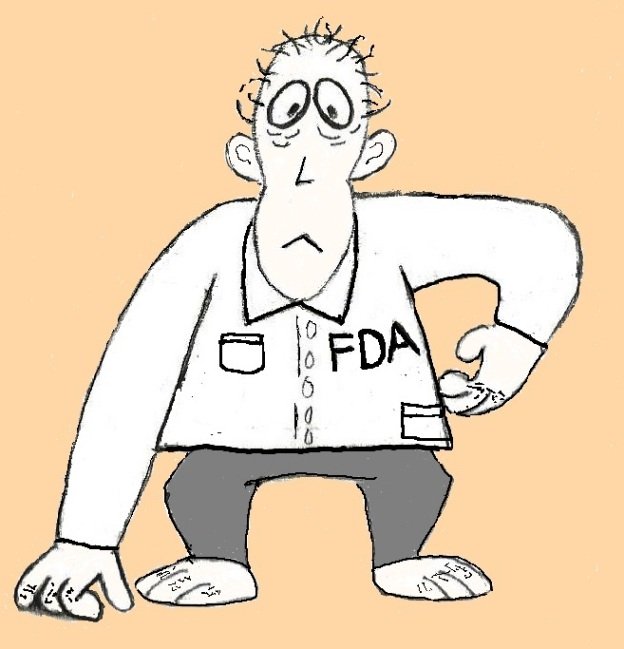
10. Chemical Safety Testing Is A Joke
You might be thinking, doesn’t somebody, somewhere, test these chemicals to make sure they aren’t toxic? It is supposed to be the role of the FDA and the EPA to protect us from the toxins in food, water, personal care products, pesticides, plastics, building products and much more.
But, they do an inadequate job for many reasons. One reason is that the FDA and EPA usually rely on safety tasting done by the companies that actually make the chemicals! No conflict of interest there. Right?
Plus, while there are 600 chemicals proven to be toxic that the EPA, through its Toxics Release Inventory, tracks, there are thousands of potentially toxic chemicals in use everyday that haven't been properly tested. For example, about 13,000 chemicals are used to make cosmetics and only about 10 percent have been evaluated for safety.
Even when they test chemicals and determine them to be safe for use in products, the testing is not done in the context of the chemical’s use. In other words, let’s say that a safe exposure level was determined for chemical A. Chemical A is added to a lotion and a soap that you use daily. You have now been exposed to double the amount that is considered safe. This is called multiple exposures.
Also, different toxins can interact with each other in your body to add to or magnify each chemicals toxic effects. This is called synergy, a process where the combined action of two things is greater than the sum of their effects individually. With some chemical concoctions, two plus two equals five. Synergy, like the problem of multiple exposures, is also not taken into account when testing the safety of chemicals.
An example of this is the chemical cocamide DEA, used as to make lather in cosmetic products. It is a toxic chemical that is thought to cause cancer, which is bad enough. What’s worse is when it is combined with other chemicals common in cosmetic products it also produces another type of toxin, cancer-causing nitrosamines.
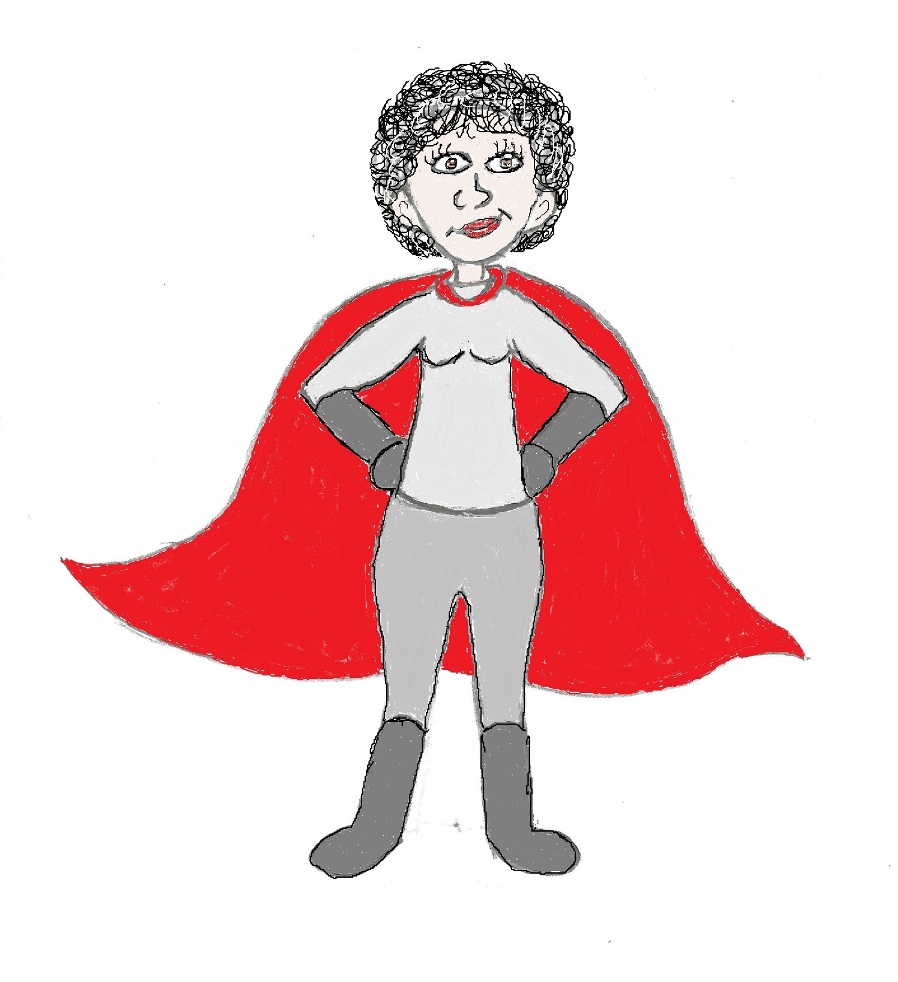
11. You Can Reduce Your Exposure To Toxins
While living a toxin-free life is impossible, you can protect your health by making some changes to reduce your exposure to dangerous chemicals. Start with one of the categories below because they are major sources of toxin exposure.
Pesticides are designed to kill things. Insects, weeds, mammals, bacteria - basically anything that you don’t want invading our space. So by their very nature they are toxic. There are an estimated 600 different chemicals in the 200,000 synthetic pesticides on the market. Many of them can make you sick.
But, you don't have to expose yourself to these toxins. For every bug and weed issue there are plenty of effective, natural and less toxic approaches to control pests.
Plastics
A single plastic part may be made up of 5-30 different
chemicals. When you look at a plastic container it seems solid and sturdy, right?
BUT - many of the chemicals used to make plastic aren't chemically bonded to the plastic and easily leach from it. What that means is these chemicals end up in the food and water that is stored in plastic and can also evaporate into the air.
Common additives include antioxidants such as BHT and BHA, various phthalates and of course BPA.
I already mentioned that one of the ways toxic chemicals enter your body is through your skin. And the lotions and potions you use contain a lot of them. These include preservatives like parabens, unknown fragrance chemicals, contaminants from manufacturing and skin absorbing enhancers.
Although your skin provides an effective protective barrier for your body using products with skin absorbing enhancers opens this barrier up. This allows the toxins in skin care products to be more easily absorbed into your body.
While outdoor air pollution is a health concern, the truth is, indoor air can be an even greater source of toxin exposure. The level of indoor chemical toxins is often higher than outdoors because many products you use in your home release chemicals into the air.
Chemicals that evaporate (called volatile and semi-volatile organic compounds or VOCs) into the air from products you use are trapped in your home. The heavier, less volatile chemicals also attach to house dust.
If you’ve ever smelled fresh paint, a new vinyl shower curtain, or that “new car smell” you know what volatile organic compounds (VOCs) are. Dozens of VOCs can be admitted from a single product.
Sources of indoor air pollution include; vinyl products, scented products. furniture, dry-cleaned clothing, nonstick cookware, cleaning products, plastics, pesticides, fabric softener, flame retardants and anything that is stain resistant.
The toxins in your food come from a variety of sources. These include
- The type of pots and pans you use
- The containers you store your food and water in
- The pesticides used to grow your food
- The nonstick and plastic components in small appliances
- Preservatives
- Dyes in processed foods
- Contaminants from growing and processing food.
Many dangerous toxins can end up in your drinking water. They enter water from a bunch of different sources. Everything from manufacturing, fracking, farming and sewage treatment plants, to runoff from urban and suburban areas, can affect your water quality.
For example, If you have a well, the pesticides you and your neighbors use on your lawns can contaminate your water. If you're connected to a public water system many of the chemicals that may be in your water aren't tested for or removed during water treatment. Plus, the process of cleaning up your water leaves behind toxic disinfection byproducts.
It's important to be aware that you drink water from the same source every day, resulting in long-term exposure to some dangerous chemicals.
I hope you will use this information to start your journey toward less toxic living. Start by making small changes and set realistic goals. To take the next step in your non toxic living journey check out Shedding Your Toxic Product Habit.
You'll find plenty of info on Nontoxic For Health that will help you live a less toxic life.
To simplify the process I've created a 16 Step Guide To Less Toxic Living. In this guide you'll find everything you'll need to reduce your toxin exposure, written in an easy to follow format. This guide covers topics like detoxing your food, water, personal care and cleaning routines to cleaning up your indoor air.
Take your time and follow each step to accomplish healthy aging through less toxic living.
And remember, staying healthy by reducing your exposure to toxins is a long-term detox strategy.
